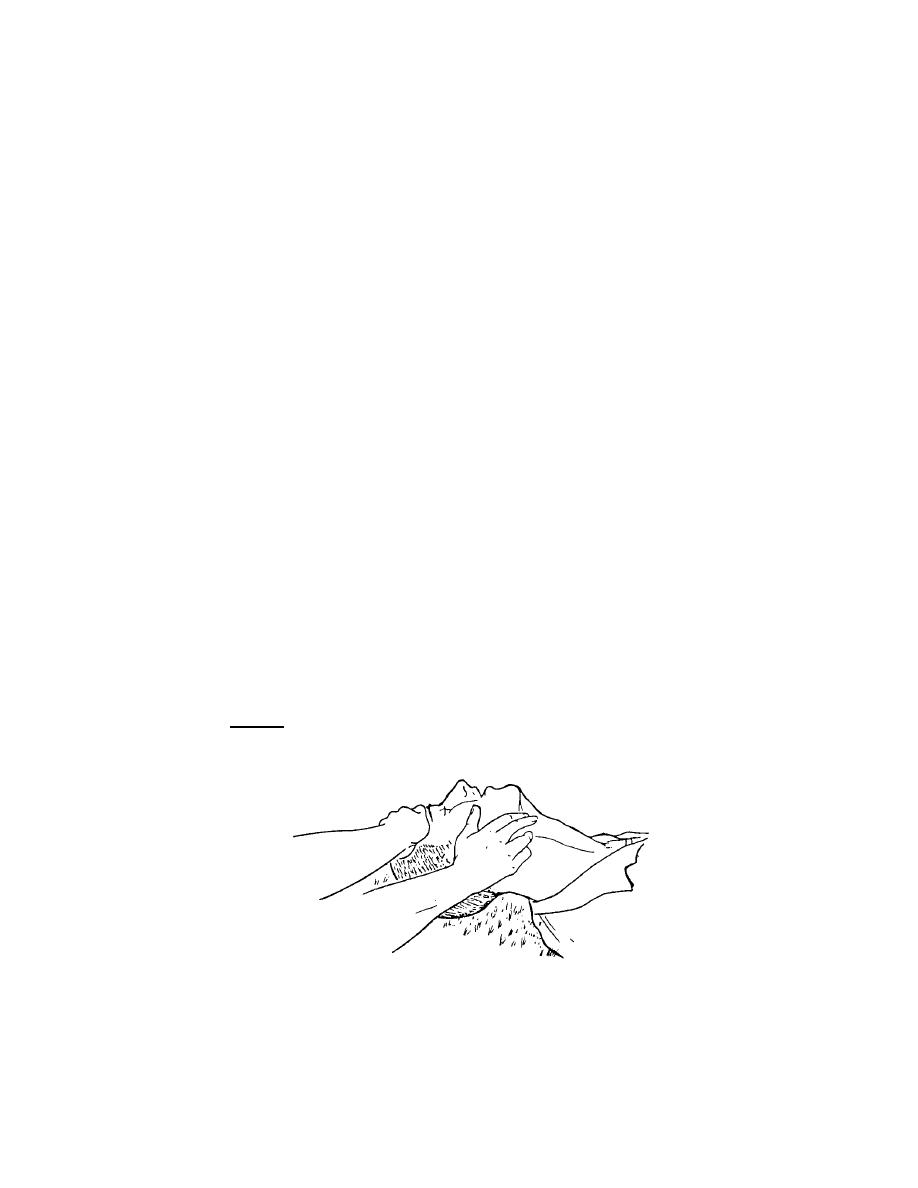
(3)
If the casualty's chest did not rise and fall, then air is not getting into his
lungs.
(a) Try to open the casualty's airway more (lift the chin more and/or
increase the tilt of the head) and administer two full breaths again.
(b) If the casualty's chest still does not rise, a foreign object is probably
blocking his airway. Remove any visible blockage. Administer manual thrusts (see
Section II of this lesson) as needed to expel any blockage. Once the airway is
unblocked and the obstruction removed, administer two full breaths again and
reevaluate.
d. Check the Casualty's Pulse. If the casualty's airway is open (two full
breaths delivered successfully), check for a pulse. A pulse indicates that the heart is
still pumping blood.
(1) Continue to maintain the casualty's airway. If the head-tilt/chin-lift
method is being used, keep one hand pressing on the casualty's forehead.
(2) Locate the carotid artery on the side of the casualty's neck that is closest
to you. One carotid artery is located in the groove on the left side of the trachea
(windpipe) next to the casualty's larynx (Adam's apple). The other carotid artery is
located in the groove on the right side of the trachea next to the casualty's larynx.
(3) Once the artery is located, gently press on the artery with your middle
and index fingers and feel for a pulse for 5 to 10 seconds (figure 3-5). Also look for
signs of spontaneous breathing (rising and falling of the casualty's chest, etc.) while
checking the pulse.
CAUTION:
Do not use your thumb to feel for the casualty's pulse. If you use your
thumb, you may mistake the pulse in your thumb for the casualty's pulse.
Figure 3-5. Feeling for a carotid pulse.
MD0877
3-7


 Previous Page
Previous Page
